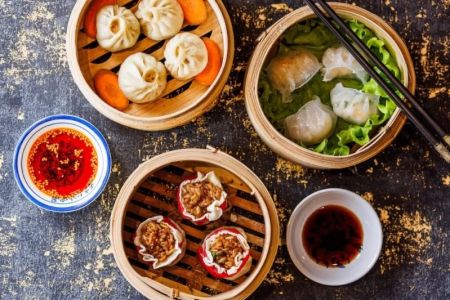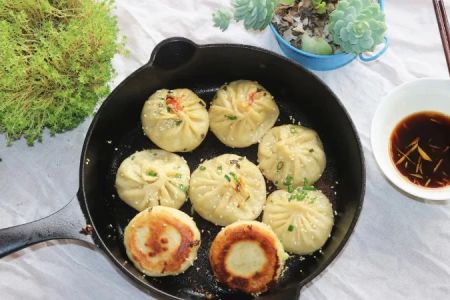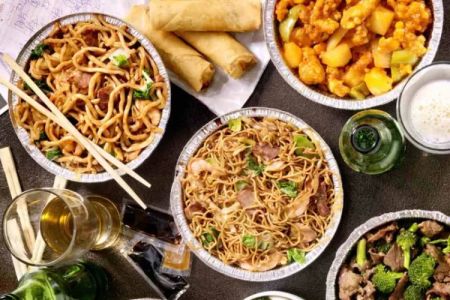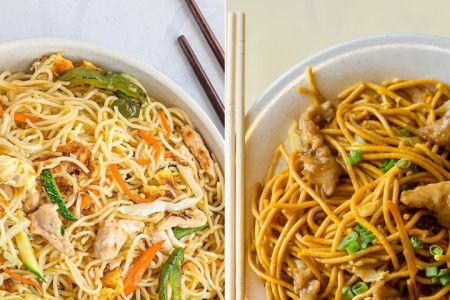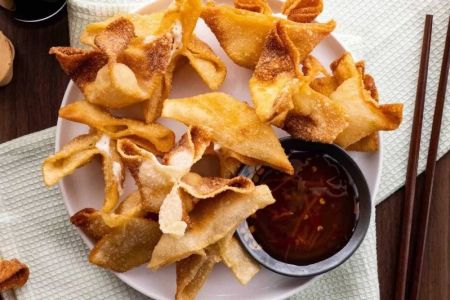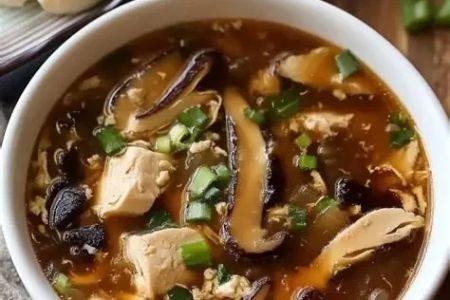Fresh Chinese Food Ingredients: A Guide to Authentic and Fresh Ingredients for Chinese Cooking
- 1. Why Fresh Chinese Food Ingredients Matter
- 2. Key Fresh Chinese Ingredients You Should Know
- 3. Where to Buy Fresh Chinese Food Ingredients
- 4. How Fresh Ingredients Elevate Your Chinese Cooking
- 5. Real-Life Experience: Cooking with Fresh Chinese Ingredients
- 6. Tips for Storing Fresh Chinese Ingredients
- 7. How Chinese Food Ingredients Can Transform Your Cooking
1. Why Fresh Chinese Food Ingredients Matter
When it comes to Chinese cuisine, the use of fresh ingredients is crucial for achieving authentic flavors and textures. Fresh Chinese food ingredients, from vegetables and herbs to sauces and spices, play a fundamental role in creating the rich, bold, and balanced flavors characteristic of Chinese dishes.
Using fresh ingredients enhances not only the flavor but also the nutritional value of your meals. The freshness of ingredients like ginger, garlic, and cilantro can elevate simple stir-fries or soups into restaurant-quality dishes. Whether you’re cooking at home or ordering from a restaurant, the quality of the ingredients is paramount to ensuring the best possible outcome.
2. Key Fresh Chinese Ingredients You Should Know
If you're ready to explore the world of fresh Chinese ingredients, here are some key items to keep in mind when shopping or cooking:
- Ginger: Fresh ginger is essential in many Chinese dishes, adding a sharp, zesty flavor that complements everything from stir-fries to broths.
- Garlic: Garlic is a staple in Chinese cooking. Fresh garlic cloves provide a rich, aromatic flavor, especially in savory stir-fries and sauces.
- Scallions (Green Onions): Often used as both an aromatic and garnish, scallions add a crisp, mild onion flavor to dishes like fried rice or soups.
- Chinese Cabbage (Napa Cabbage): This crunchy and sweet cabbage is commonly used in hot pots, stir-fries, and dumplings.
- Chinese Mushrooms: Varieties like shiitake, enoki, and wood ear mushrooms are integral to many Chinese recipes, adding earthy flavors and a satisfying texture.
- Five-Spice Powder: This blend of star anise, cloves, Chinese cinnamon, Sichuan peppercorns, and fennel seed brings a unique and aromatic depth to dishes like braised meats and stir-fries.
- Oyster Sauce: A thick, savory sauce made from oysters, often used to add umami to stir-fries and vegetable dishes.
These fresh ingredients are foundational to many Chinese recipes and essential for bringing the true flavors of Chinese cuisine to life.
3. Where to Buy Fresh Chinese Food Ingredients
Finding fresh Chinese food ingredients can be easy if you know where to look. Here are some options for sourcing authentic ingredients for your next meal:
- Asian Grocery Stores: Many cities have Asian grocery stores that specialize in Chinese food ingredients. These stores offer a wide variety of fresh produce, spices, sauces, and dried ingredients that are hard to find elsewhere.
- Farmers' Markets: For the freshest produce, check out local farmers' markets where you can often find Chinese vegetables like bok choy, napa cabbage, and fresh herbs like cilantro and mint.
- Online Markets: Websites like Weee! and Asian Food Grocer offer delivery of fresh Chinese food ingredients straight to your door, making it convenient to find exactly what you need.
- Specialty Stores: High-end grocery stores or international supermarkets often carry a selection of fresh Chinese ingredients, especially in larger cities with diverse populations.
These options make it easy for home cooks to access fresh ingredients, whether you’re cooking for a family meal or hosting a dinner party.
4. How Fresh Ingredients Elevate Your Chinese Cooking
Fresh ingredients bring a vibrancy to Chinese cooking that canned or frozen items simply cannot match. The natural flavors and textures of fresh vegetables, herbs, and proteins are key to achieving the complex, balanced flavors of authentic Chinese dishes.
For example, using fresh ginger and garlic creates an aromatic base that is both savory and fragrant. Fresh scallions add a crispness to stir-fries that frozen versions can’t replicate. When using fresh ingredients, your dishes will have a depth of flavor that can’t be achieved with substitutes.
By focusing on fresh ingredients, you can create a more authentic dining experience and enjoy healthier, more flavorful meals at home.
5. Real-Life Experience: Cooking with Fresh Chinese Ingredients
One of my most memorable cooking experiences was preparing a homemade Chinese hot pot using only fresh ingredients. I visited an Asian grocery store and picked up some napa cabbage, fresh mushrooms, tofu, and a variety of dipping sauces. The moment I placed the fresh vegetables and mushrooms into the boiling broth, the kitchen filled with the most incredible fragrance.
The taste of the dish was so much richer and more vibrant than any pre-made version I had tried before. Cooking with fresh ingredients made the process feel more authentic and rewarding, and it was a meal that my family still talks about today.
If you’ve never used fresh Chinese food ingredients before, I highly recommend trying it out—it truly transforms your cooking!
6. Tips for Storing Fresh Chinese Ingredients
Storing fresh Chinese ingredients properly ensures that they stay fresh for as long as possible. Here are some tips to help you store your ingredients:
- Store Leafy Greens in the Fridge: Chinese leafy vegetables like bok choy and napa cabbage should be stored in the fridge, ideally in the crisper drawer.
- Keep Herbs Fresh: Herbs like cilantro and mint should be kept in a jar of water with a plastic bag over them to maintain freshness. Alternatively, you can store them in a damp paper towel in the fridge.
- Freeze Extra Sauces: If you buy sauces like oyster sauce or hoisin sauce in large quantities, consider freezing them in ice cube trays for easy portioning.
- Use Fresh Meat Promptly: Fresh meat and seafood should be cooked within a day or two of purchase, or frozen if you plan to use them later.
Proper storage helps preserve the flavor and texture of fresh Chinese ingredients, ensuring that your meals are always fresh and delicious.
7. How Chinese Food Ingredients Can Transform Your Cooking
Using fresh Chinese food ingredients can truly elevate your cooking. The vibrant colors, rich textures, and complex flavors of these ingredients help bring your Chinese dishes to life. Whether you’re making a simple stir-fry or an elaborate hot pot, fresh ingredients provide the building blocks for a truly authentic and delicious meal.
For anyone looking to improve their Chinese cooking, investing in high-quality fresh ingredients is the first step. Once you start cooking with fresh produce, herbs, and spices, you’ll notice the difference it makes in your dishes, both in flavor and presentation.
Ready to discover the best fresh Chinese food ingredients for your next meal? Click here to explore top Chinese ingredients and start cooking today!



